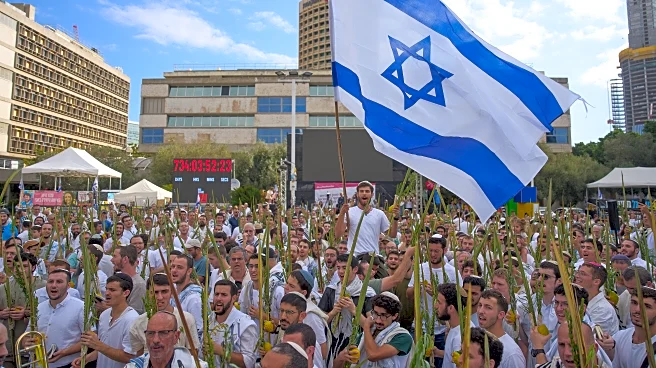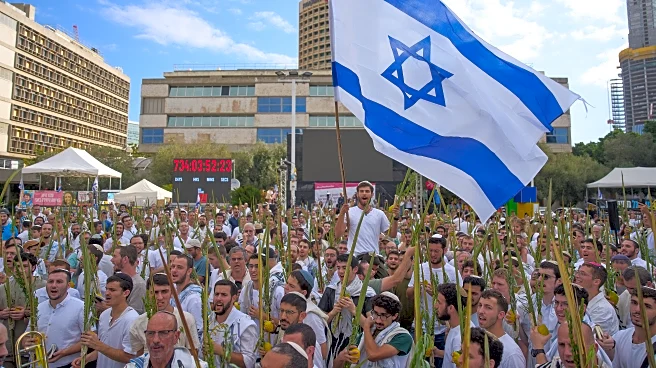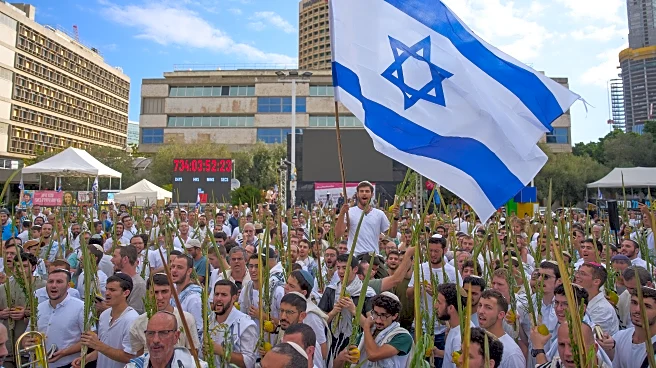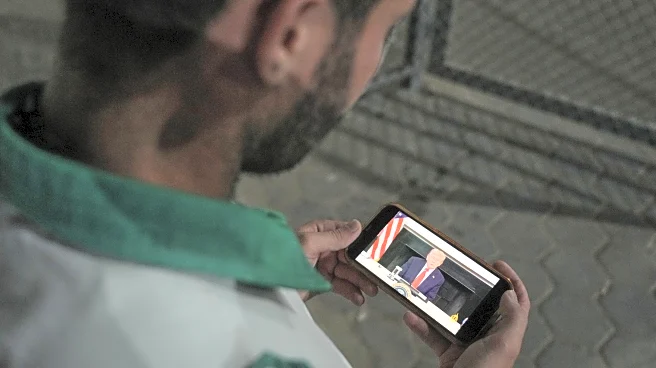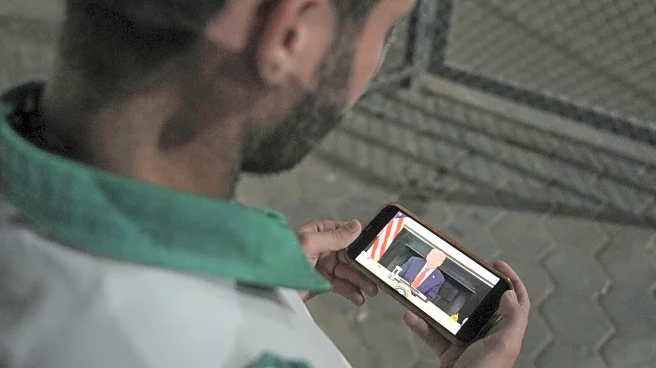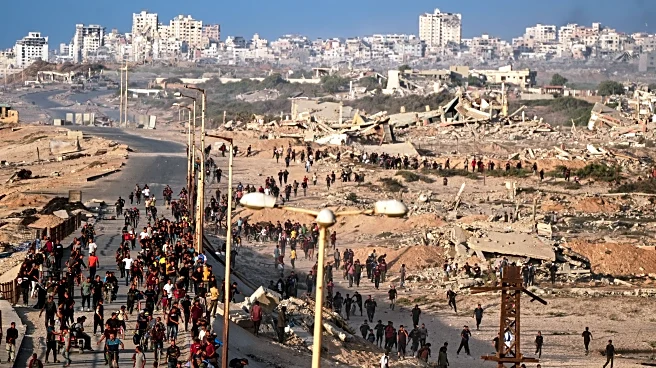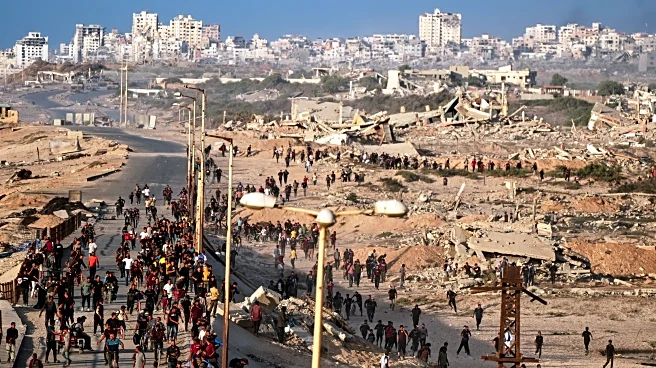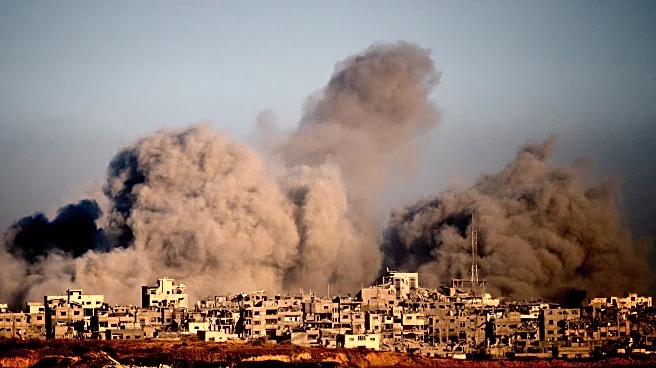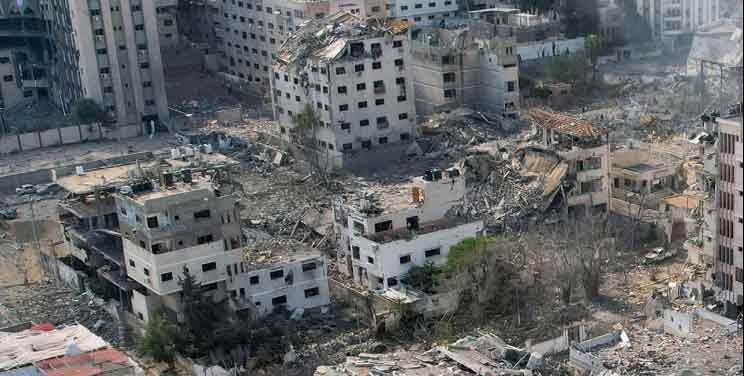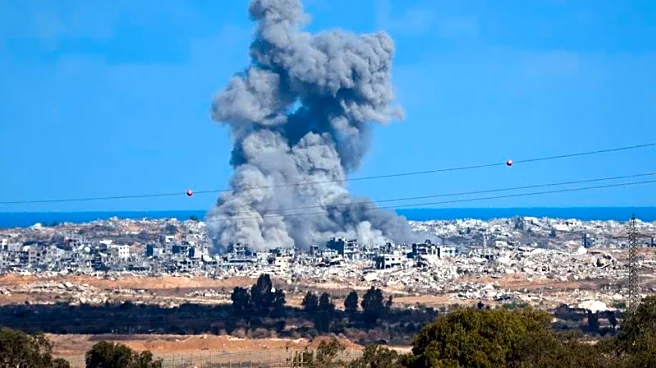The Israeli military said Friday that the ceasefire agreement with Hamas came into effect at noon local time, and that troops were withdrawing to the agreed-upon deployment lines.
The announcement came
after Palestinians reported heavy shelling Friday morning in northern Gaza.
Prime Minister Benjamin Netanyahu’s office said early Friday that Israel’s Cabinet approved President Donald Trump’s plan for a ceasefire in the Gaza Strip, the release of all remaining hostages and of Palestinian prisoners.
The statement said the Cabinet approved the “outline” of a deal to release the hostages, without mentioning other aspects of the plan that are more controversial.
While the approval marks a key step toward ending a devastating two-year war, the broader ceasefire plan includes many unanswered questions, including whether and how Hamas will disarm and who will govern Gaza.
Here's the latest:
Large crowds of people who had gathered in Wadi Gaza in central Gaza in the morning started walking north after the military’s announcement that a ceasefire had taken effect at noon local time.
Earlier, Palestinians reported heavy shelling in parts of Gaza throughout Friday morning.
“We want to go back,” said Fayez AlMajdoub, who was displaced from northern Gaza. "I want to go and make sure my home is still there. That’s what I want to know.”
The spokesman, Avichay Adraee, said that Palestinians can now return to northern Gaza by two roads, though he warned against approaching areas in northern Gaza including Beit Hanoun, Beit Lahiya, Al-Shujaiyya, and areas where troops are still present.
Elsewhere in southern Gaza, Adraee warned Palestinians against approaching the Rafah crossing the philadelphi corridor and all areas where troops are present in Khan Younis.
He spoke Friday as the Israeli military said the ceasefire with Hamas has taken effect.
Earlier Friday morning, Gaza residents reported intensified shelling after Israel’s Cabinet approved the ceasefire plan.
In central Gaza’s Nuseirat refugee camp, Mahmoud Sharkawy, one of the many people sheltering there after being displaced from Gaza City, said artillery shelling intensified in the early hours.
“The shelling has significantly increased today,” said Sharkawy, adding that low flying military aircraft had been flying over central Gaza.
In northern Gaza, two Gaza City residents told The Associated Press that bombing went on in the early hours, mostly artillery shelling.
The managing director of Shifa hospital, Rami Mhanna, said the shelling in southern and northern Gaza City had not stopped following the Israeli Cabinet’s approval of the ceasefire plan.
The troops will help support and monitor the ceasefire deal in Gaza as part of a team that includes partner nations, nongovernmental organizations and private-sector players, U.S. officials said Thursday.
The officials, who spoke on condition of anonymity to discuss details that were not authorized for release, said U.S. Central Command is going to establish a “civil-military coordination center” in Israel that will help facilitate the flow of humanitarian aid as well as logistical and security assistance into the territory.

